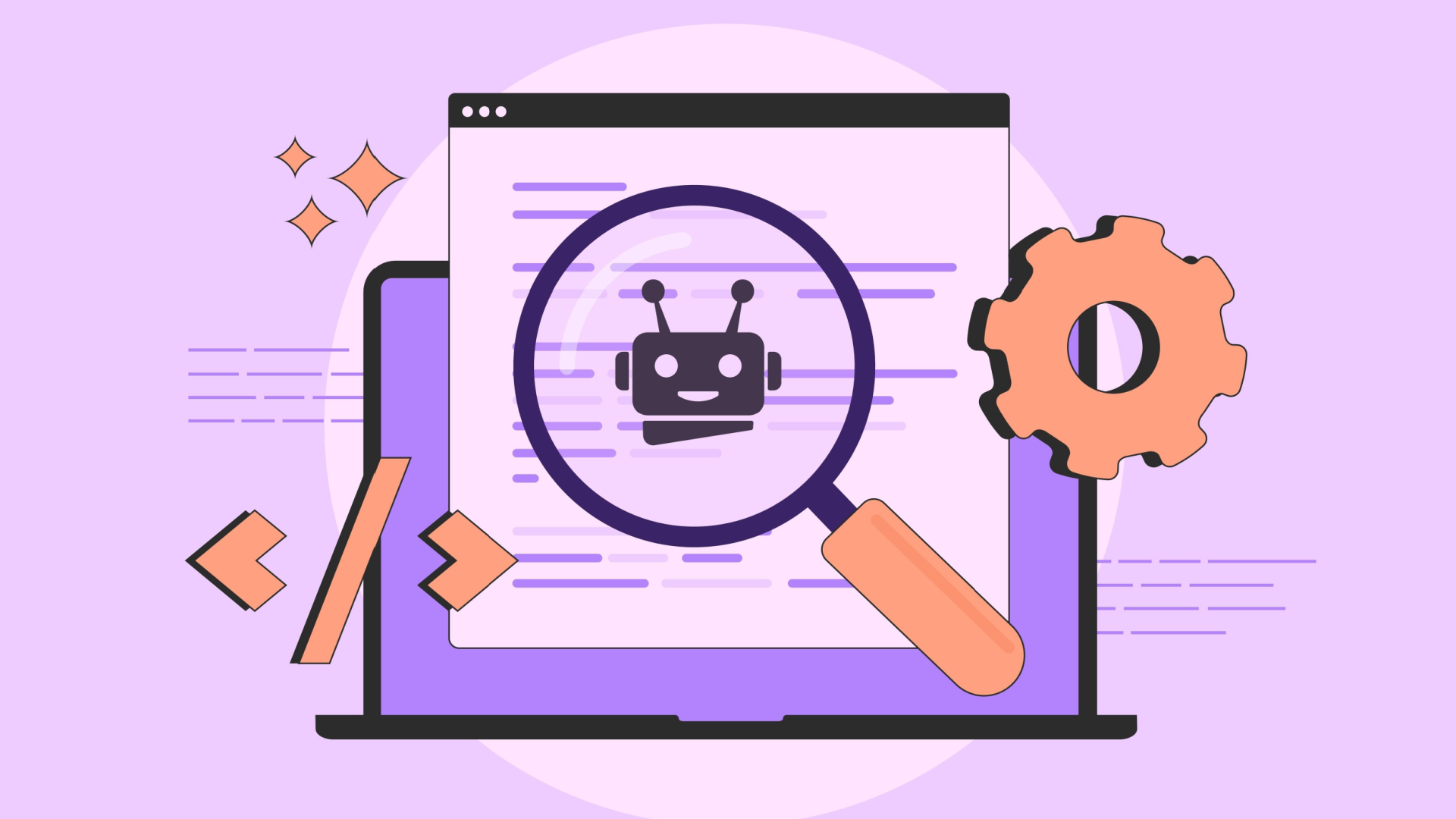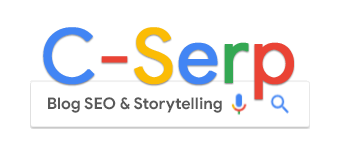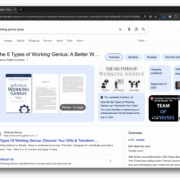Why your best content is invisible to AI search engines (and how to fix it in 30 minutes)

When I searched for “Working Genius framework” to research a new tool for my company, something shocking happened.
The company behind the framework had to buy ads to show up for their own product.
Their explanation of the six types of working genius was trapped inside a fancy widget that Google’s AI couldn’t read.
While competitors and Wikipedia showed up in the AI results, the actual creators were invisible.

This isn’t just about one company. It shows how AI search engines work.
Your best content might be completely invisible to the AI systems that control how people find information online.
The 5-minute AI visibility test
Let’s check if your content is visible to AI right now:
- Go to your most important page.
- Right-click and select View Page Source (or press Ctrl+U).
- Search for your key selling points or main benefits.
- If they’re not in that raw HTML code, AI can’t see them.
Found your content missing? Keep reading.
Found it there? You’re ahead of 60% of websites. But there’s still more to optimize.
What AI search engines actually see (and what they miss)
AI search engines like Google’s AI Overview, ChatGPT search, and Perplexity work like speed readers.
They scan for specific things that help them understand your content fast.
What AI systems look for:
- Clear headings (H1-H3) that show your main topics.
- Simple lists that break ideas into small pieces.
- Special code that labels what your content means.
- Plain HTML text that loads right away.
What they skip:
- Content hidden in JavaScript widgets.
- Click-to-reveal sections and dropdowns.
- Content that loads after the user clicks.
- Text in images without descriptions.
The problem isn’t that AI systems are weak. They just focus on speed.
They read the raw HTML your server sends. They don’t wait for fancy interactive features to load.
Dig deeper: AI optimization – How to optimize your content for AI search and agents
The real cost of hidden content
Let me show you what this looks like with three Louisiana universities competing for [best online MBA] searches.

The University of Louisiana shows up big in Google’s AI results.
But Tulane University’s Freeman School of Business is not found in AI results. Therefore, they have to buy ads instead.
Here’s why.
University of Louisiana (Winning):
- All program details are in plain HTML.
- Clear headings like “MBA Program” and “Curriculum.”
- Special code that marks up their program info.
- Fast-loading pages with content you can see right away.
Tulane University (Invisible to AI):
- Key MBA info is buried in JavaScript tabs and sliders.
- Generic headings that don’t say much.
- No special markup for their program.
- Heavy use of interactive features that AI can’t read.
This isn’t about money or reputation. It’s about how they built their websites.
The less famous school wins AI search because they made their content easy for machines to read.
The shift to AI search optimization
Old-school SEO focused on gaming algorithms with keyword stuffing and link schemes.
AI search optimization flips this approach.
Instead of trying to trick rankings, you focus on making your content easy for AI systems to understand.
The new way
| Old SEO | AI search optimization |
|---|---|
| Keyword stuffing | Clear, simple language |
| Link schemes | Easy-to-read content |
| Meta tag tricks | Special markup that helps AI |
| Fast pages for humans | Fast pages for machines |
| Mobile-first design | AI-first design |
This is a big change in how search works.
Success now means creating content that works for both people and AI search engines.
Your 30-minute AI search fix
Ready to make your content visible to AI? Here’s your step-by-step plan:
Step 1: Check your current visibility (5 minutes)
- Use the page source test above on your Top 3 pages.
- Run a free check with tools like Screaming Frog.
- Find content that only shows up with JavaScript.
Step 2: Fix your content structure (15 minutes)
- Make sure you have one clear H1 that states your main topic.
- Add H2s for big sections (like “Benefits,” “How It Works,” “Pricing”).
- Use H3s for smaller sections under each H2.
- Turn key points into bullet lists for easy reading.
Step 3: Add basic special code (10 minutes)
Add FAQ markup for your most common questions:
<script type="application/ld+json">
{
"@context": "https://schema.org",
"@type": "FAQPage",
"mainEntity": [{
"@type": "Question",
"name": "What is [Your Main Topic]?",
"acceptedAnswer": {
"@type": "Answer",
"text": "Your clear, simple answer here."
}
}]
}
</script>Step 4: Move important content to HTML
- Find your most important selling points.
- Make sure they show up in plain HTML, not JavaScript widgets.
- If you must use dynamic content, use server-side rendering.
The working genius lesson: When widgets hide your best ideas
Let’s go back to the Working Genius example to see exactly what went wrong.

The Working Genius website beautifully explains the six types of working genius:
- Wonder.
- Invention.
- Discernment.
- Galvanizing.
- Enablement.
- Tenacity.
However, this explanation is locked behind an interactive widget, so users have to click through each type one by one.
This creates a great user experience. But it makes the content completely invisible to AI systems.
AI needs to see all information when the page first loads.
The fix would be simple:
- Add a complete text description of all six types in HTML.
- Keep the interactive widget as a bonus feature.
- Use proper headings to organize the information.
- Add FAQ markup for common questions about each type.
This approach works for both audiences. Humans get the interactive experience. AI systems can access and cite the content.
When Wikipedia beats you at your own game
Here’s a frustrating reality many businesses face.
You search for your company’s expertise, and Wikipedia shows up in AI results while your content doesn’t.
This happens because Wikipedia has mastered AI search optimization.
Why Wikipedia wins AI search
Wikipedia shows up in Google AI results and ChatGPT responses because its content follows perfect AI search rules:
- Clear structure with standard headings and sections.
- Complete markup that labels entities, relationships, and definitions.
- Plain HTML content with no fancy JavaScript.
- Consistent formatting that AI can easily read.
- Rich content that establishes clear topic relationships.
What does this cost your business?
When Wikipedia dominates AI search results for your expertise, you lose:
- Brand authority in your own field.
- Direct traffic from AI-generated responses.
- Lead opportunities from people seeking your services.
- Thought leadership in your industry.
How to take back your authority
- Create complete resource pages: Build pages that cover your expertise better than Wikipedia. Include definitions, examples, case studies, and practical tips.
- Optimize for entity recognition: Use consistent terms. Help AI systems understand that your company is the go-to source for specific concepts or methods.
- Build topic clusters: Create connected content that establishes your authority across related concepts. Link between pages with descriptive anchor text.
- Use complete schema markup: Use special code to tell AI systems what concepts you own and how they relate to each other.
- Monitor your topic authority: Track which terms trigger AI responses that cite competitors instead of you. Create targeted content to compete for those queries.
Remember: AI search engines favor authoritative, well-structured content from recognized experts.
By optimizing your content properly, you can often beat even Wikipedia for searches in your specific area of expertise.
Dig deeper: Answer engine optimization – 6 AI models you should optimize for
Your AI search success checklist
Use this checklist to make sure your content is AI-ready:
Content structure
- One clear H1 that states your main topic.
- H2s for each major section.
- H3s for smaller sections when needed.
- Key information in bullet or numbered lists.
Technical focus
- Important content visible in page source (Ctrl+U test).
- Fast page loading (under 3 seconds).
- Clear link text (“Download pricing guide,” not “Click here”).
- Descriptions for all important images.
Special code
- FAQ markup for common questions.
- Article markup for blog posts.
- Product markup for service pages.
- Organization markup for about pages.
Performance
- Core content loads without JavaScript.
- Interactive features enhance rather than hide information.
- Server-side rendering for dynamic content.
Common pushback (and how to handle it)
‘Our developers say this will hurt user experience’
- Response: AI Search Optimization makes UX better, not worse. You can have both interactive features and AI-visible content.
‘We spent a lot on our current interactive design’
- Response: Keep your design. Just make sure core information is also available in HTML. Think of it as making your content work for both humans and machines.
‘This seems like a lot of technical work’
- Response: Start with content structure (headings and lists). That alone will improve your AI search visibility a lot.
Next steps: Pick your starting point
Don’t try to fix everything at once. Pick one approach based on your situation:
- If you’re new to AI search optimization: Start with the 30-minute plan above. Focus on your homepage first.
- If you have technical resources: Add server-side rendering and complete markup for AI search engines.
- If you’re working with developers: Share this guide. Emphasize that AI Search Optimization makes user experience better, not worse.
The key is starting now. Every day your content stays invisible to AI search engines is a day your competitors get ahead in AI-generated search results.
Preparing for the future of AI search
The AI search world is changing fast. What works today is just the foundation for what’s coming next. Here’s how to prepare your content strategy for the future of AI-powered search.
What’s coming next
- Voice search integration: AI assistants like Siri, Alexa, and Google Assistant are pulling more information from AI search engines instead of regular web results. This means your AI search optimization directly affects voice search visibility.
- Visual search evolution: Google Lens and similar tools are starting to combine AI-generated explanations with visual search results. Make sure your images have good descriptions and connect properly to your content.
- Specialized AI search tools: Industry-specific AI search tools are emerging for healthcare, legal, finance, and other sectors. These specialized systems often have stricter requirements for markup and authoritative content.
- Multi-modal AI responses: Future AI search will combine text, images, videos, and interactive elements in responses. Start preparing multimedia content that’s properly marked up and accessible to AI systems.
Building an AI-first content strategy
- Content planning for AI: Develop content designed to answer the questions AI systems encounter. Create complete resource pages that cover topics better than competitors.
- Entity-based content organization: Structure your content around clear entities (people, places, concepts, products) that AI systems can easily identify. Use consistent terms across all content.
- Predictive content creation: Monitor AI search trends to identify emerging query patterns. Create content that anticipates questions before they become popular search terms.
- Cross-platform optimization: Make sure your content works across different AI platforms (Google AI, ChatGPT, Perplexity, Claude) by following universal markup standards.
Preparing your team
- Editorial guidelines: Develop content guidelines that prioritize AI search optimization alongside traditional SEO and user experience.
- Technical training: Make sure your development team understands markup implementation and server-side rendering requirements for AI search visibility.
- Analytics evolution: Traditional search metrics may become less relevant as AI search grows. Prepare to track brand mentions in AI responses, topic authority scores, and direct citations from AI systems.
- Competitive monitoring: Regularly check how competitors appear in AI search results for your key topics. Find content gaps and opportunities to establish thought leadership.
Long-term planning
- Brand authority building: Focus on becoming the recognized expert in your domain. AI systems prefer citing authoritative sources, so building topic authority becomes crucial for long-term visibility.
- Content depth vs. breadth: AI search engines favor complete, authoritative content over thin pages. Invest in creating definitive resources rather than many shallow pages.
- Technical infrastructure: Make sure your website can handle increased AI crawler traffic and provides consistent, fast access to your content for AI systems.
- Relationship building: As AI search evolves, relationships with AI platform providers may become as important as traditional SEO relationships. Stay informed about platform guidelines and best practices.
The businesses that thrive in the AI search era will be those that start optimizing now, not those that wait.
The fundamentals you implement today – clear structure, accessible content, and complete markup – will serve as the foundation for whatever AI search innovations come next.
The bottom line
Your content expertise deserves to be found and cited by AI search engines.
The companies that thrive in this new landscape will be those that make their knowledge accessible to both human readers and AI systems.
The choice is simple: adapt your content for AI search optimization, or watch competitors dominate the AI-generated answers to questions you’re uniquely qualified to address.
Ready to make your content visible to AI search engines?
Start with the page source test right now. Your future AI search rankings depend on the HTML you write today.
Want to learn even more?

Join us at SMX Advanced in Boston this June or SMX Advanced in Berlin this October.
Or dive deeper at the SMX Generative Engine Optimization Master Class – version 2.0.
We’ll show you hands-on how to master AI SEO and keep your best content front and center.


